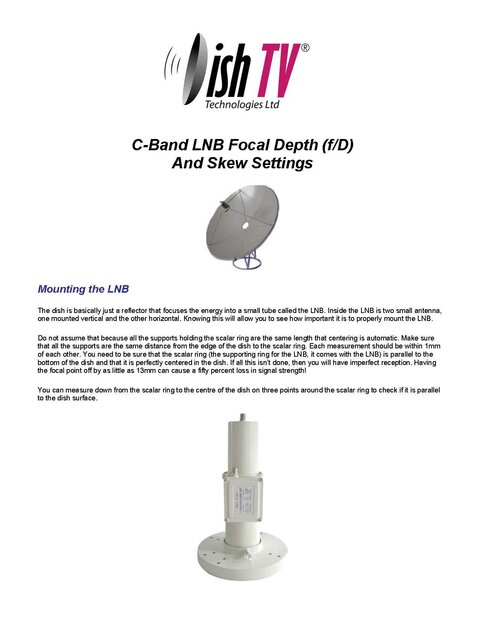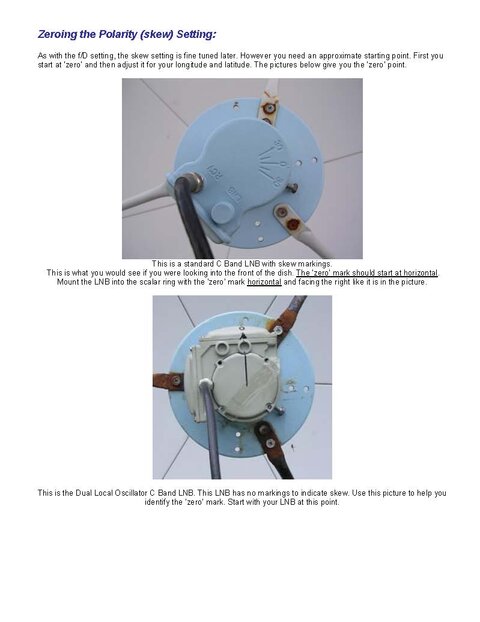Hi Guys, How to know when the LNB has reached its optimum point, before tihgting up scres & bolts?
WIth the snow already melt and temperature continuing to rise in SW Ontario, it won't be too long before playing again with my 6' BUD.
Is there any best practices to tune the C-Band LNB up? Ku dish LNB tuning is relatively easy procedure done from beneath w/o interfering with the satellite path (for offset dishes) however with C-Band dish is another story; fine C-Band LNB tuning implies to physically rotate the LNB a few segments of arc at a time and check your signal before tightening the bolts up> I follow the same aproach for focus tuning. To do that you will position in front of the dish afecting the incoming signal. That creates noise on the receiver to a point that you may need to restart it again.
This procedure is what I follow, however I find it sort of cumbersome and lenghty.
Is there any tool of any other way to rotate the LNB without standing in front of it and w/o affecting the incoming signal? Please do share your experiences.
WIth the snow already melt and temperature continuing to rise in SW Ontario, it won't be too long before playing again with my 6' BUD.
Is there any best practices to tune the C-Band LNB up? Ku dish LNB tuning is relatively easy procedure done from beneath w/o interfering with the satellite path (for offset dishes) however with C-Band dish is another story; fine C-Band LNB tuning implies to physically rotate the LNB a few segments of arc at a time and check your signal before tightening the bolts up> I follow the same aproach for focus tuning. To do that you will position in front of the dish afecting the incoming signal. That creates noise on the receiver to a point that you may need to restart it again.
This procedure is what I follow, however I find it sort of cumbersome and lenghty.
Is there any tool of any other way to rotate the LNB without standing in front of it and w/o affecting the incoming signal? Please do share your experiences.






